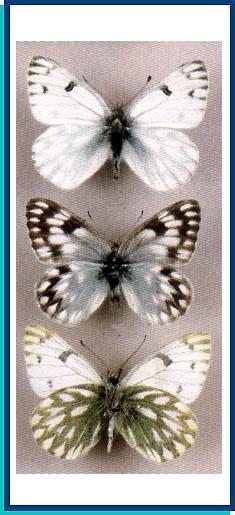LEPIDOPTERA
PIERIDAE Duponchel,1835
PONTIA Fabricius,1807
Pontia callidice (Hubner, [1800])
Pontia callidice nelsoni Edwards, 1883

• TYPE LOCALITY. "Walliser Alpen" [Swiss Alps].
• RANGE. Tundras and mountains (up to the desert zone) throughout the Palaearctic Region.
• DISTRIBUTION AND VARIATION. The nominate subspecies occurs in the Caucasus Major and Minor, Turan, the SE. European part, SW. Siberia, the Altai, the Sayan Mts., Transbaikalia. In addition, the following subspecies have been described: ssp. chrysidice (Herrich-Schaffer, 1843) - the Armenian Highland, Talysh, Kopet- Dagh, S. Ghissar; ssp. amaryllis Hemming, 1933 (= orientalis Alpheraky, 1881, nom. praeoccup.) - Tian-Shan, Ghissar, Darvaz, Alai; ssp. hinducucica Verity, [1911] - the Pamirs; ssp. nelsoni Edwards, 1883 - polar tundras of Siberia, the Far East, Kamchatka and the Chukot Peninsula.
• TAXONOMIC NOTES. In general, variation in the species is very low and probably all immediately above taxa can be regarded as infrasubspecific varieties at best. Moreover, we are inclined to believe that the Palaearctic P. callidice and the Nearctic P. occidentalis (Reakirt, 1866) are conspeciflc.
• HABITATS AND BIOLOGY. All types of wastelands ranging from tundra to desert and from sea-level to 4,500 m a.s.1. (in the Pamirs). Flight period: May-September in several generations. Host plants (Nekrutenko, 1990): Brassicaceae (Erysimum, Sisymbrium, Thiaspi), also Reseda (Resedaceae).
• SIMILAR SPECIES. P. chloridice: UPF black colour developed only at the apex in males; white median stripe in the black discal spot is distinct. P. daplidice: UNH white spots rounded; green pattern more strongly developed. P. glauconome: UNH ground colour yellowish with markings poorly developed.
Photo and text: Guide to the BUTTERFLIES OF RUSSIA and adjacent territories Volume 1. PENSOFT, Sofia - Moscow. 1997